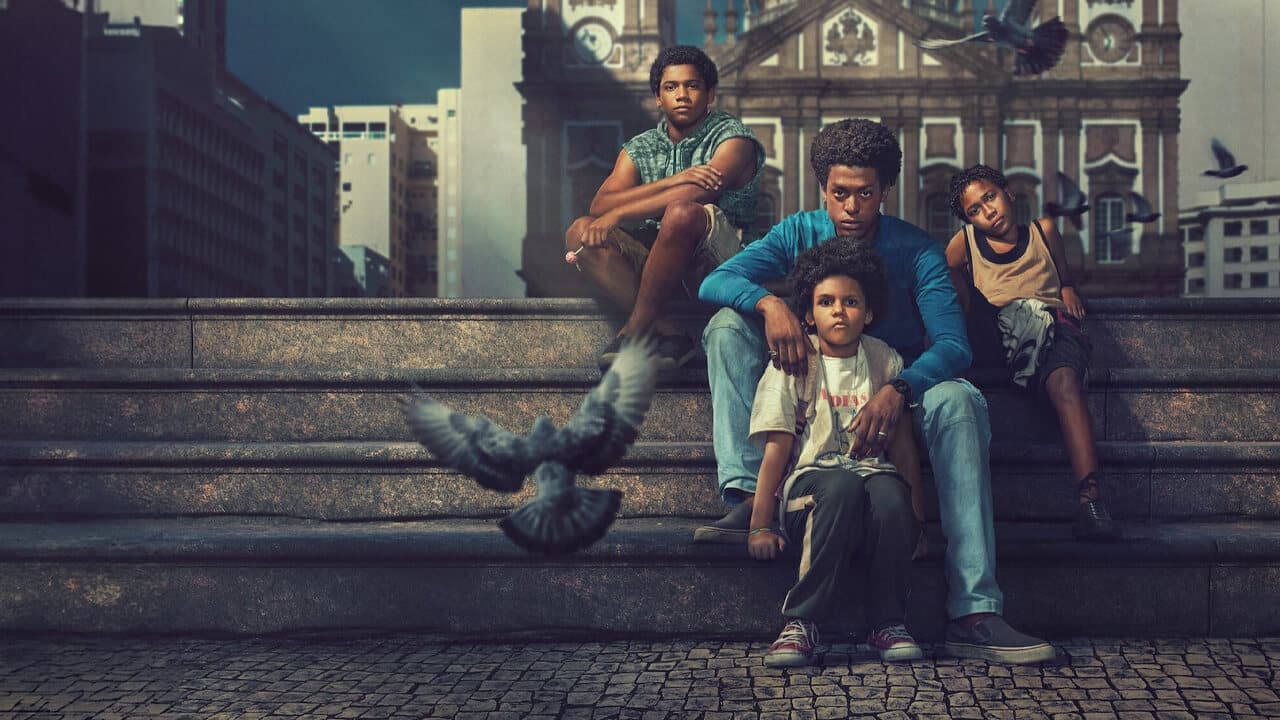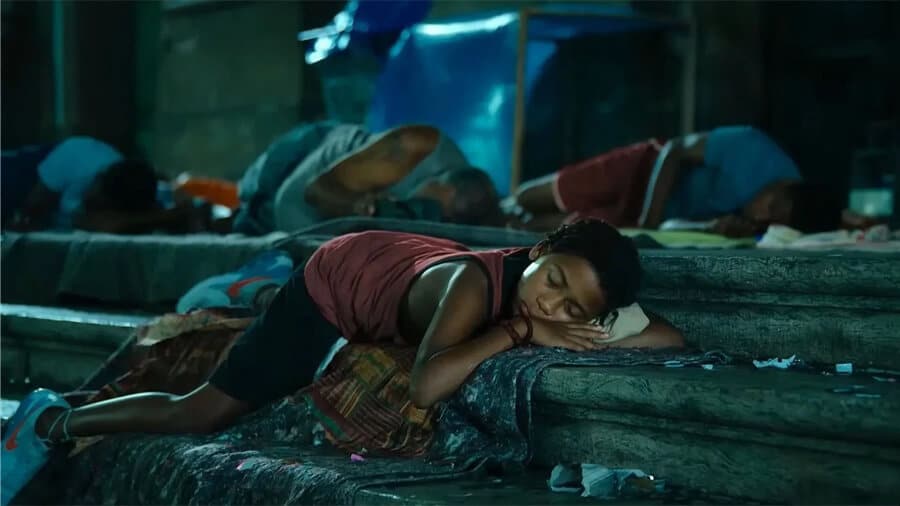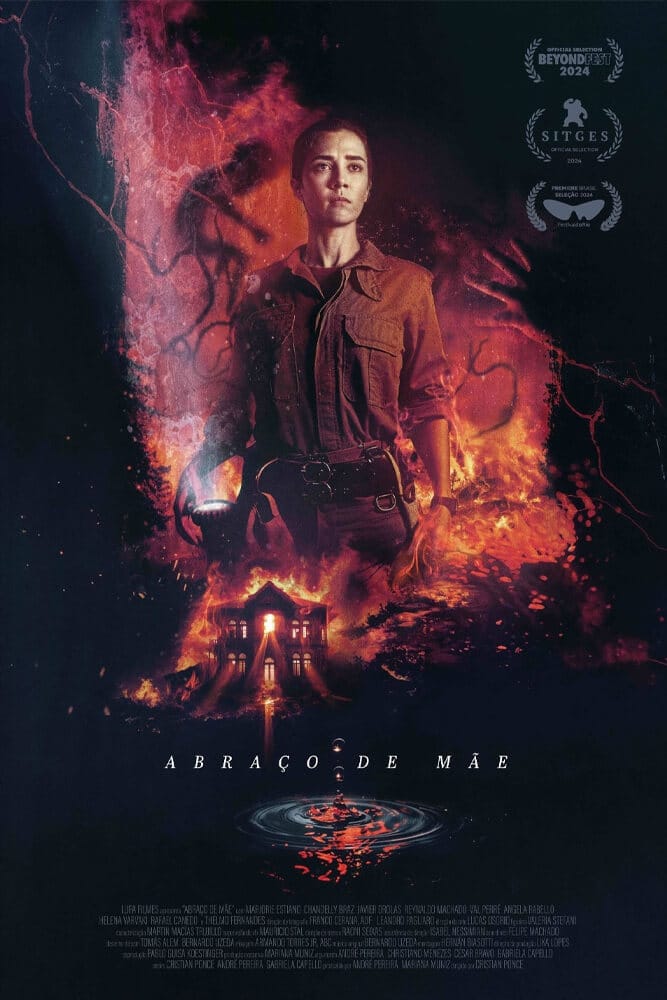[ad_1]

Picture: Children of the Church Steps – Jabuti Films / Netflix
Recently, we had the pleasure of discussing the sound design of Luis Lomenha’s Netflix miniseries with sound editors Tomás Alem and Bernardo Uzeda of Rio-based studio Aura Post.
Children of the Church Steps is a fictional retelling of the Candelaria Church Massacre in Rio De Janeiro, Brazil. Created by Luis Lomenha, It follows the story of four homeless orphans who call the church’s steps their home and one fateful night that destroyed innocent lives and devastated an entire nation.
Jacob: How did you first become involved with Children of the Church Steps?
Bernardo: We’ve been working with Netflix since 2017 on several projects and series, including a José Padilha series and some feature films. A few production companies, mainly in Rio and Sao Paulo, work with the largest streaming services, such as Netflix.
We already had a good relationship with the producers, mainly from Chroma Key, the production company that brought us in. So, we already knew some of the production or post-production supervisors. Then we got on board, and working for the first time with Luis Lomenha and Márcia Parias, both directors, and Fernando Meirelles, the executive producer, was a real pleasure.

Picture: Reporter Tiago Coelho and Luis Lomenha at a round table discussion for Netflix
Jacob: Could you give us an overview of the sound design team?
Tomás: Yeah, Bernardo and I shared the sound supervision. We have a team here at the Aura, and it was a long process. We spent almost two years on the project, and Bernardo and I shared the supervision. We have a team of editors, and our structure is for recording foley and sound effects editors. But in the end, everything goes by us. And also the partnership we have with Armando, the recording mixer, that we pride ourselves on this partnership. He’s a great professional.
Jacob: What’s the biggest challenge in creating a sound or vibe from a city from over 30 years ago?
Tomás: Yeah, that’s a really interesting question because we did many original recordings for this project. And there were challenges. We had to cut a few elements from what we recorded. For example, the city downtown today has a train that wasn’t there years ago, and it has a unique bell, so that sound got into the dialogue and the production sound.
So we had to take these more obvious elements, accept them, and make some concessions because the series had to do it. It’s not 100%. It’s not like a documentary. Real citizens will know every aspect of the place better. The Candelaria Church is very famous here. It’s suffered a lot of transformations in 30 years from 30 years ago. But we had to make some concessions. Of course, authenticity is also a concern.

Picture: Candelaria Church in Rio de Janeiro
Jacob: Well, that somewhat answers another question I had. Would someone from Rio who watched the show be able to recognize the sounds of the city?
Bernardo: I think Tomás could talk about the original recordings for the train, which happens in episode four, maybe.
Tomás: Yeah, this series plays with the realistic and fantasy. We had a lot of moments of freedom to play with the sounds, feelings, and sensations. But Rio is there. Everyone from the city will be able to recognize the trains, bus squeaks, the traffic, downtown, and the many street sellers, markets, and commerce, and we captured all of that. The accents and the unique way Cariocas, people from Rio, talk. I guess it’s recognizable.

Picture: A street market in Rio de Janeiro, Brazil.
Jacob: With each episode taking the POV of different characters, did that reflect the sound design of each episode?
Bernardo: Yeah, I think we had a lot of discussion with the directors about which elements were important to emphasize that should be similar within the four episodes and which elements we had more freedom to change. Marcia, one of the directors, even stated that it was interesting not always to copy the same thing happening repeatedly and that some changes were interesting because each episode can fantasize about a possible future and a different point of view from each of the protagonists. So we have that freedom to combine. Of course, the events were inspired by actual events, but the series takes that to another level since we are on each episode from the POV of each child. So, from the girls’ POV, we have different sensations and sounds from the boys’ POV, etc.
We had, especially in the factory scene, Tomás can talk about this better from the sound effects. Some elements were interesting to be the same, like the alarm or the gunshots, which are more crude, realistic, and action-oriented. Other elements, like the sound of the machines, were totally fantastic because the machines weren’t turned on. But Pipoca, the girl, was dreaming of chocolates being made. So there was this freedom in some aspects, and there were some compromises and commitments to elements that were interesting to repeat since it’s the same event.

Picture: Samuel Silva as Douglas
Jacob: So what does it mean to you both getting to work on a series focused on the Candelaria Massacre?
Tomás: Yeah, I can, personally. I was less than 10 years old at the time, and what happened was like this moment that paralyzed the country. It’s a really important story in Rio. We, of course, are privileged in our lives. Still, we can relate to this case, and it is an honor to be able to help tell the story that Luis Lomenha researched as he worked with some of the survivors he interviewed.
Jacob: I will admit, before the series, I had never heard of the Candelaria Massacre, so it was quite an education, to say the least.
Bernardo: Yeah, and since Rio is a very mixed city, unlike many other cities in the world, where you have the ghettos and the main downtown, it is very mixed. Not to mention, Candelaria is less than 10 minutes from our studio. It’s something that still affects everyone in the city today. It’s not something that was isolated and forgotten, and we hope that the series will bring back thoughts of these events. Not through sadness or a harsh view, but some hope for the future, and the fantasy elements help to tell that story.
Jacob: What was it like working with Luis Lomenha? Was there a lot of collaboration between you and the directors?
Bernardo: We had a great time working with Luiz, and our aesthetic views for the project were quickly synced. And we had very few things where we wouldn’t agree with how the sound should be, such as where it should be more fantasy-like or extra-realistic. It was also interesting working with Luiz when recording the ADR and the dubbing for the children because we had two big challenges, one of which was bringing back those kids to their characters, which were filmed one year before. Also, their voices have changed slightly, especially Douglas and Pipoca, but Sete and Jesus have not changed so much because they’re older.
So we had to find their characters again in the ADR session, and Luis was great at directing the actors, bringing them back to the sets, and imagining that they were in those situations while filming. And because it’s complex working with children, maybe, and even more complex children who are not very experienced actors, sometimes you have a child actor who has already done ten films or projects. I think most of the actors were doing projects this big for the first time. So, it was a considerable risk for the production and the directors, and I think the payoff was high. Just like City of God, I think it’s a similar approach. And I think the kids are a special gem on the whole project.
Jacob: What are you working on next?
Tomás: We just completed an HBO series here in Brazil with a director from Recife, but we don’t know when it will be released. It was really interesting work. It also tells historic moments in Brazil, from AIDS to the trafficking of drugs from the US by some flight crews and all the environments behind that, the parties, and everything else from the time.
It’s an exciting project we could work on. We are also working on a few Netflix projects that we cannot talk about now, but we are delighted to be able to work on those projects and ongoing projects from streaming, which is a challenge for us. We had to build a structure here to attend to the demands of international standards. It’s not an easy thing to do in Rio. But also, there are a lot of partnerships and projects, including independent projects in Brazil, that we pride ourselves on doing. So, there’s a lot to come. We hope to keep it that way.
Bernardo: Yeah, to compliment what Tomás said, we also had a very recent premiere last month, which was A Mother’s Embrace, directed by Christian Ponce, an Argentinian director, which had a very successful feature on Netflix called History of the Occult. Also, A Mother’s Embrace is a fascinating film, and I got to do the original score.
Tomás did the sound design and the same re-recording mixer from Children of the Church Steps. So, it was a pleasurable, really great process. Working on more genre-oriented horror projects, where sound and music have more freedom to explore, is also fun. But of course, Children of the Church Steps, we also had a lot of freedom. But with horror, sometimes we can be crazier, I think, and have more fun.
We would also like to plug our website, aurapost.com.br. If anyone is interested!
Tomás: Also, our Instagram!
Did you watch Children of the Church Steps? Did you enjoy the series? Let us know in the comments below!
